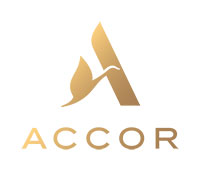Westin's New Ad Campaign Eases Travel Angst
|
Westin's New Ad Campaign Eases Travel Angst
|
Category: Worldwide
This is a press release selected by our editorial committee and published online for free on 2007-08-02
$30MM Experiential Campaign Uses Non-Traditional Methods to Bring Renewal to Commuters in Major Transit Hubs Throughout the United States
This summer Westin Hotels & Resorts is transforming some of the country's most hectic transportation hubs into "places of renewal." Westin's $30 million campaign uses experiential mediums including 3-D and Bluetooth billboards, image-shifting lenticulars and sub-media (ads that appear to move on the train tunnel walls, much like a giant flip book), that bring to life the brand's ongoing concept of personal renewal. Rolling out in major cities including Chicago, Boston, Atlanta and San Francisco, the campaign culminates on August 1st in New York City when every possible media touch point in Grand Central Station will be a carefully choreographed brand immersion experience. One of many executions includes the interiors of three Grand Central/Times Square shuttle trains completely wrapped with 360-degree imagery of a lush rain forest, tropical scuba dive or a soothing sauna leading to an icy lakeshore.
The new out-of-home executions, created by Deutsch New York and implemented by MediaVest, are an evolution of Westin's groundbreaking "This is How it Should Feel" marketing and engagement effort. The 2007 ad buy will also include print, radio, online, and multiplatform elements.
"The use of non-traditional media marks an exciting new direction for Westin," said Sue Brush, Senior Vice President, Westin Hotels & Resort. "What better way to convey the Westin Renewal experience than to literally surround consumers with positive experiential messages in subways and airports and on highways, where they are most stressed and yearning for an escape? This message is particularly resonant with business travelers, who can appreciate the juxtaposition between the most stressful moments of the day and the most renewing."
Deliberately devoid of room shots, fluffy beds, sunsets and other typical hotel amenities, the new campaign turns traditional hotel advertising on its head. The ads instead convey what guests will feel at a Westin--a rejuvenating, personal experience, free from the stresses of travel and everyday life.
The campaign's clever use of imagery and "environmental messaging" literally and figuratively turns everyday negatives into positives, transforming the mundane commute into an unexpected oasis. A busy escalator, for example, is transformed into a rushing tropical waterfall, while airport signage creates a mental link between negatives like the frustration of delays and positives like the exhilaration of surfers lined up waiting for the perfect wave. In New York, an interactive Bluetooth billboard invites passersby to download a soothing, original Westin ringtone because "renewal is calling." The billboard was created thanks to the overwhelming number of people who inquired about the song featured in last year's 15-second TV spots. In response, Westin went back to the studio to record the full track.
"This phase of the Westin campaign is designed to embrace and evoke the feelings of renewal and rejuvenation that Westin provides by being more experiential," said Peter Nicholson, Partner, Chief Creative Officer Deutsch New York. "We've taken advertising and made it work harder to reward people for spending time with the executions; a mini escape from the day."
The campaign's large-scale use of 360-degree media and environmental messaging is a breakthrough for the hotel industry, integrating an impressive range of non-traditional mediums to engage consumers at multiple touch points. Spread out over five markets, with more than 270 different visuals and 2,754 media placements, the campaign includes:
-- Sub-media: Using the motion of the trains, images lining the tunnel walls act like a giant flipbook. During A.M. traffic, riders will see a signature Westin botanical unfurl, tagged with "Morning stretch." Evening commuters will see a crashing wave, tagged with "Rush hour."
-- Lenticulars: These unique pieces of media are a perfect fit for providing a transformative experience to commuters. Peppered through train stations, the animation moves from ordinary and banal things like rush hour traffic to a rushing waterfall.
-- Column Wraps: Landscape photos will be spread across several columns throughout Grand Central Station, New York. As commuters approach the columns from specific vantage points, the landscape photos converge to create a cohesive picture. Tagged with "Breathing room," the columns are designed to anticipate commuter's natural foot patterns.
-- Airport: Environmental messaging and contextual ads will speak directly to travelers to help them relax, pause and de-stress. For example, the negative associations people make with de-icing will be re-lensed as two-beach chairs on a sunny beach.
-- Larger-than-life billboards: Westin is also re-lensing billboards, with unique three-dimensional billboards spread out over five major U.S. cities. Situated in Manhattan near the entrance to the Holland Tunnel, a three-dimensional billboard of a simple Zen garden provides a visual escape from a heavily congested traffic zone. In Boston, multiple three-dimensional skydivers are placed in front of a beautifully printed sky. The goal is to provide commuters with a different, more invigorating take on "rush hour."
-- In-train Signage: Commuters will no longer associate "delays" with waiting for a train. Instead, as the image suggests, Westin will evoke the feeling of floating on a surfboard, waiting for the perfect wave to roll in. "Appointments" will no longer refer to your 3:30 status meeting, but remind you of tee-time.
|
|




